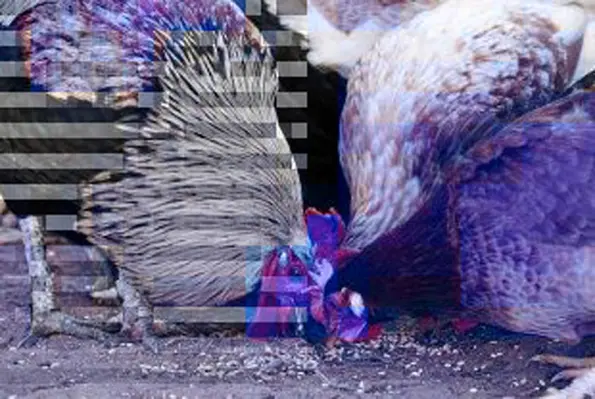Page 2 of 2Because of its makeup, litter in a poultry barn will always contain a certain amount of moisture, most of which comes from the birds themselves. Birds retain only about 30 per cent of the water they drink. About 20 per cent goes into the air as the birds exhale, and they excrete the remaining 50 per cent in their feces.
While some moisture in the litter is inevitable, farmers should strive to keep the moisture content to a minimum - about 20 to 25 per cent. This will keep the litter friable.
The following are some tips on how to keep the litter dry:
Prevent leaky drinkers. Establish a regular programme of high pressure flushing for the watering system. This will remove biofilm and sediment buildups that can clog drinkers and cause them to leak. Ziggity recommends using a hydrogen peroxide-based cleaner to scrub the interior of the water pipes before flushing.
Also, when you determine a drinker is leaking, replace it immediately.
Have adequate ventilation, summer and winter. Another reason for wet litter is inadequate ventilation to dry the litter and move the moisture out of the poultry barn. In warm weather, it makes sense to ventilate the barn. The air movement helps keep the birds cool, as well as removing moisture from the barn. In cooler weather, you’ll find it necessary to heat the barn, not only to protect the birds from cold, but also to continue the evaporation process. Too often, farmers will attempt to save money by cutting back on heating. Research by University of Georgia poultry scientists shows, however, that the money saved on fuel is far outweighed by the money lost on underperforming birds as a result of elevated litter moisture and ammonia levels.
Maintain correct pressure settings. During the drinking process, birds can only retain a certain amount of water in their beaks. If more water discharges from the drinker than what the bird can retain, the oversupply spills onto the litter. The key to achieving the correct pressure settings for your system is to take litter readings. Again, strive for friable litter.
Many farmers use their watering system to vaccinate their flocks against respiratory disease. If you do, it is a good procedure to flush the water lines about 24 hours prior to vaccination to remove any biofilm and sediment in the lines. Then immediately after the vaccination, flush the lines again. This will remove any nutrients in the lines left over from the stock vaccine solution. Also, be sure that when you administer the vaccine, the lines are fully charged with the vaccine solution. If they are not, you will have birds drinking plain water instead of the vaccine.
Respiratory disease is a serious threat to the poultry industry. Each year, it determines for many producers the difference between making a profit and suffering a loss. The best way to combat respiratory disease is to fight ammonia in the poultry barn.
Source: Ziggity Systems, Inc.





